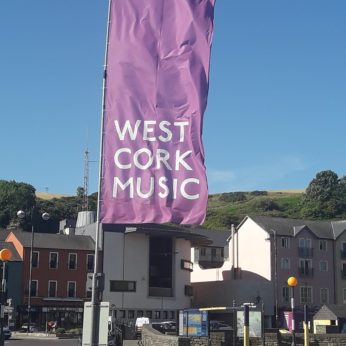Composer: Ludwig van Beethoven (b. 1770 - d. 1827)
Performance date: 07/07/2018
Venue: St. Brendan’s Church
Composition Year: 1796
Duration: 00:25:12
Recording Engineer: Ciaran Cullen, RTÉ
Instrumentation Category:Quintet
Instrumentation Other: ob, cl, hn, bm, pf
Artists:
Barry Douglas -
[piano]
Bram Van Sambeek -
[bassoon]
Ron Schaaper -
[horn]
Annelien Van Wauwe -
[clarinet]
Ramon Ortega Quero -
[oboe]

68. COFFEE CONCERT – ST BRENDAN’S CHURCH 11.00
Barry Douglas [piano]
Ramon Ortego Quero [oboe]
Annelien Van Wauwe [clarinet]
Ron Schaaper [horn]
Bram van Sambeek [bassoon]
Ludwig van Beethoven [1770-1827]
Quintet for Piano and Winds in E flat Op.16 [1796]
1. Allegro ma non troppo
2. Andante cantabile
3. Rondo – Allegro ma non troppo
Everything about this comparatively early work by Beethoven speaks on the one hand of his love and admiration for Mozart and on the other hand of his determination to match him head to head. Beethoven took as a template Mozart’s perfect Quintet for the same instruments K.452 and set about trying to equal his great predecessor. Mozart had subtly interwoven the piano part amongst the winds, so Beethoven sets piano against the winds almost as if he was writing a concerto for piano and winds. So although wrapped in very similar outer clothing, we end up with a very different beast – a mature masterpiece versus youthful brio and freshness with Beethoven’s character stamped all over his work.
Like Mozart, Beethoven opens with a majestic slow introduction that sets the serious mood of the work. Beethoven then gives the announcement of the Allegro’s cantabile main theme to his own instrument before taking it up in the winds with the clarinet in dominating mood, the second theme is introduced in a similar manner and the substantial exposition is repeated. The development picks up on the exposition’s final cadence and launches straight into a stormy C minor followed by a series of wind dialogues against rippling figures from the piano. The movement eventually ends with a substantial coda with anarchic contributions from the horn.
The Andante’ Rondo theme is again introduced by the piano before the winds join in. The first episode opens with a delicious duet for oboe and bassoon, while the second one features a noble horn solo. Wonderful in this movement is the way the focus shifts seamlessly from instrument to instrument.
The finale is a jovial hunting Rondo in 6/8 time. With the exception of one truculent episode in E flat minor, the mood is one of unrestrained exuberance right down to the teasing coda with its flamboyant conclusion. Pure pleasure.
Francis Humphrys
Copyright © 2025 West Cork Music. All rights reserved.
Designed and developed by Matrix Internet